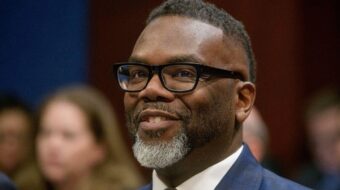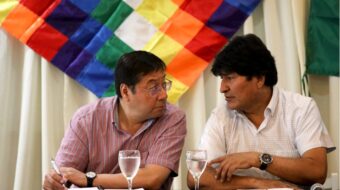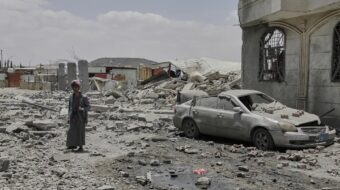The recent peace agreement between the Sudanese government and the Sudan People’s Liberation Movement/Army (SPLM/A), headed by rebel leader John Garang, has effectively ended a 21-year-old civil war that claimed more than 1.5 million lives, most of them in the southern part of the country.
Signed Jan. 9 in Nairobi, Kenya, the Comprehensive Peace Agreement concerns the north-south conflict. However, the settlement does not directly address the crisis afflicting the western region of the country, particularly in Darfur.
The north-south agreement involves a power-sharing arrangement where the revenue from the nation’s oil production will be split 50-50 between the Islamic-oriented government and the SPLM/A, which represents the predominately non-Islamic south. Under the new plan, Garang is to assume the vice presidency on Feb. 20.
Sudan, which occupies territory roughly equivalent to one-quarter of the continental U.S., is located in northeastern Africa, between Egypt and Ethiopia. It has a population of 39 million. Although most of its people face conditions of extreme poverty, Sudan’s natural resources include an estimated 2 billion barrels of oil. The country also has considerable reserves of natural gas, gold, copper, iron and other minerals.
The SPLM/A says one of its highest priorities is the voluntary repatriation of refugees whose numbers, according to UN estimates, approach 4 million. Meeting their humanitarian needs is essential to avert a general crisis of enormous proportions, observers say.
Other provisions of the agreement involve the formation of an army comprising both government and rebel soldiers, and the holding of a referendum in the South to determine whether the region’s people want independence.
The agreement stipulates that Islamic Sharia law will still apply in the northern part of Sudan. Islamic law was imposed by the Khartoum government on the entire nation in 1983, including on the predominantly non-Islamic south. Laws prevailing in the nation’s capital should be neutral, according to the SPLM/A.
During the signing ceremony, Garang said, “In our view the attempt by various Khartoum-based regimes to build a monolithic Arab-Islamic state to the exclusion of other parameters of the Sudanese diversity constitutes the fundamental problem of the Sudan and defines the Sudanese conflict. … This provoked resistance by the excluded.”
The goal of the SPLM/A is the “all-inclusive Sudanese state” with a high priority placed on the “equality of opportunity for all Sudanese citizens,” he said.
The Khartoum Center for Human Rights and Environmental Development and the Amel Center for Treatment and Rehabilitation for Victims of Torture greeted the agreement, saying that it opens up prospects for greater freedom, peace, and respect for diversity. Noting that the north-south conflict has included massive displacement of populations, the deprivation of civil rights, abductions and torture, the two groups said they welcomed the agreement and “all the parties who participated in the negotiations and discussions, and we call for widening the cooperation and implementation of these protocols on a national basis in all parts of Sudan.”
In the wake of the Jan. 9 ceremony, and despite the continuing conflict in Darfur, U.S. Secretary of State Colin Powell signaled a willingness to relax sanctions against Sudan. One consequence of such a relaxation will be to give U.S. companies greater access to the country’s oil fields.
ronphillyjr@comcast.net









